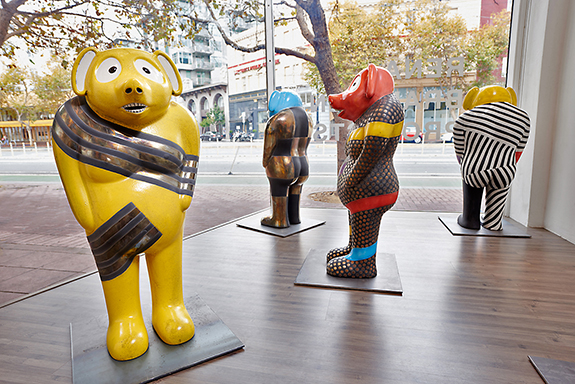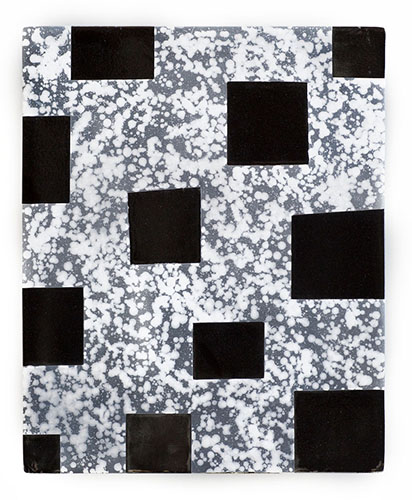 |
 |
The centerpiece is a series of seven Tanukis, so named for the “raccoon-dog,” an animal that figures prominently in Japanese folklore. Kaneko turns the creatures into big-eared, long-snouted, cross-eyed caricatures whose facial expressions and slouchy body language bring to mind the “What, me worry?” visage of Alfred E. Neuman, Mad magazine’s mascot. The Buddha-bellied figures stand like dopey sentries in the gallery’s bay window and on the floor nearby: upright and on two feet, half human, half animal, each about three feet tall.
 |
black circle, which Kaneko, in another work, brings to the fore by placing it in a sea of bright yellow and circling the “aperture” with a slender band of red. The feel is of a surveillance camera embedded in a Minimalist painting. In another work, Kaneko places geometric shapes of varying widths and colors atop a brushy white ground, evoking hexagrams of the I Ching.